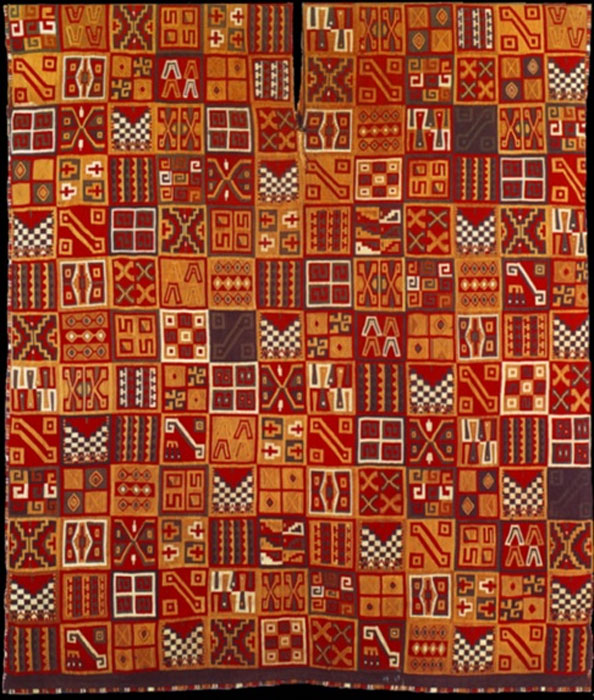
Hacking the Ancient Binary Cosmic Codes of the Inca’s Woven Textiles
Mainstream history relates how human beings hunted their way out of Africa and eventually reached the landmass now called South America about 15,000 years ago. Trading across vast mountain ranges and coastal deserts instigated a requirement to communicate increasingly more complicated ideas over greater distances and for new ways to convey and record information. Long before formal written systems of communication were developed, ancient cultures in the Andes mountains kept track of dominant natural phenomena and weather cycles, important cultural, political and mythological events in a woven symbolic language; a rich artistic communication system, enshrined in textiles and fabrics.

Tupa Inca tunic, created between 1450 and 1540 AD. Wool and cotton. 90.2 x 77.15 cm. Dumbarton Oaks, Washington, D.C. (Public Domain)
The Ancient Origins of Weaving
Knitting ancient hunting communities together, cordage production specialists braided, lashed, spliced, threaded, bound and tied together essential survival tools, but the first indications of ‘weaving’, according to an archaeological report on Donsmaps.com: “were found in indistinct textile impressions in clay and burned remnants of cloth at the Upper Palaeolithic Dolní Věstonice site dating to 27,000 years ago.” The oldest known woven textiles and cordage ever found in the Americas were detailed in scholar Kevin Stacey’s 2013 research paper titled Carbon dating identifies South America's oldest textiles as having been: “discovered in Guitarrero Cave, Peru, made from plant fibers dating to between 10,100 and 9,080 BC.”
Archaeologists excavating in the arid coastal deserts of Peru found: “preserved dyed textiles and mummified human skeletons stuffed with plant fibers and wrapped in ropes and canes in the Chilean Chinchoros region dating to 5000 BC.” From this time weaving progressed from using traditional plant fibers to making yarns with the wool of alpacas and llamas.

The high-altitude mountain tops and lagoons of Chile were highly-spiritualized and worshiped with deposits of ‘textile clad’ sacrificial mummies around 7000 years ago. (Public Domain).
Among the most advanced weaving cultures to emerge in ancient South America were the Chavin, Paracas, Wari and Inca peoples: Chavín culture emerged around the late Initial Period (circa 900 - 500 BC) and surviving textiles found in looted burials have brown dyes painted on panels of cloth. Rebecca Stones’ 2002 book Art of the Andes: from Chavín to Inca explains that: “the Chavín culture may have demonstrated the first extensive production of textiles for ritualistic and symbolic purposes; textiles from the remains of Karwa are featured as ritual cult center objects depicting explicitly feminine deities.”

The llama was the main animal bred by Chavín people who used its wool to make yarns for weaving. (Public Domain).




